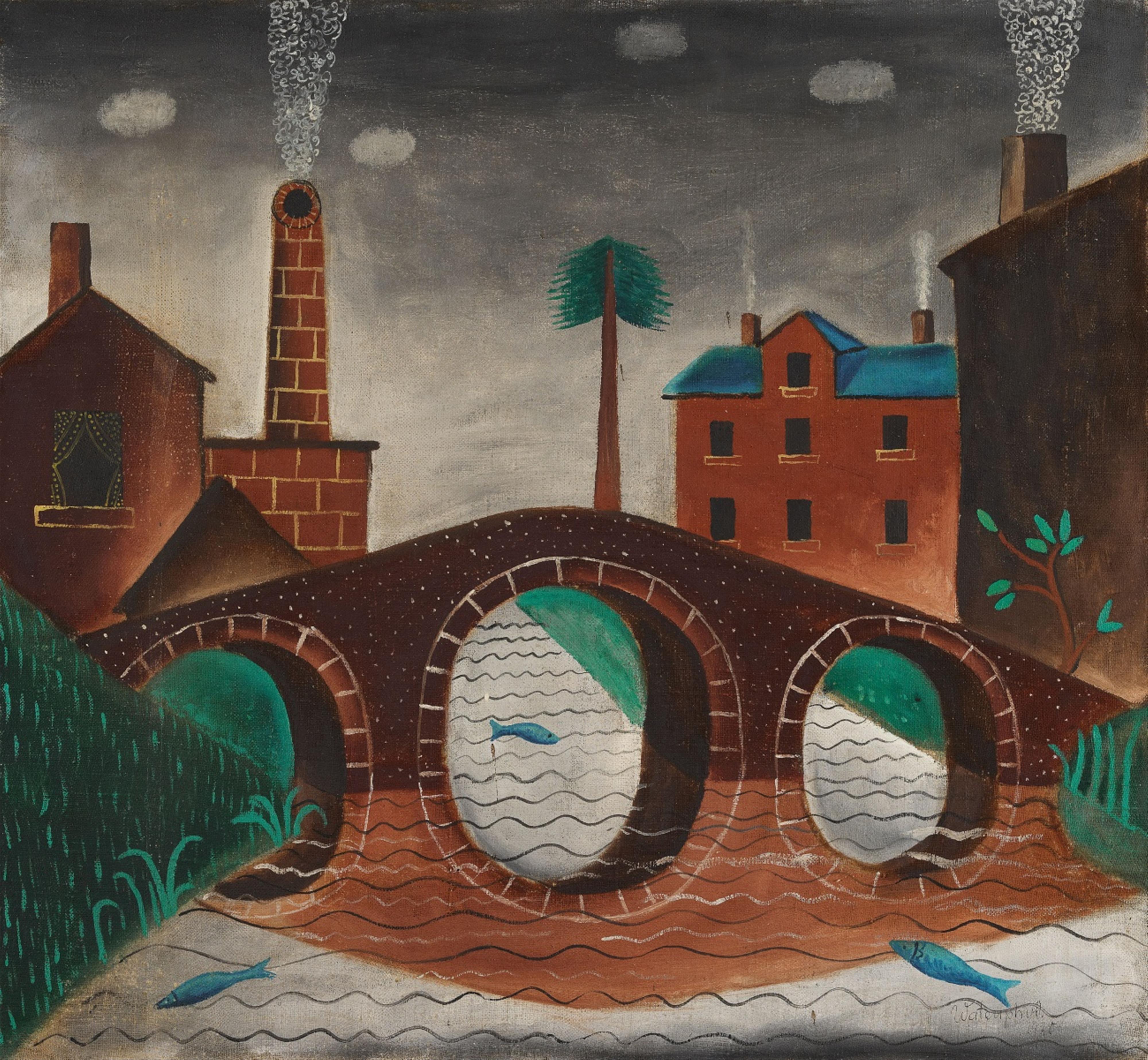Max Peiffer Watenphul
Stadtlandschaft mit Brücke
1920
Oil on canvas 54.2 x 58.7 cm Framed. Signed and dated 'Watenphul. 20' in black lower right. - On the back at the top of the chassis with a printed paper label from Galerie Flechtheim, inscribed with the number " 2748". - Verso colour scheme of an unfinished landscape. In fine original condition.
The present picture is among the earliest works by the painter Max Peiffer Watenphul and thus one of the few confirmed paintings from the artist's period in Weimar. Just one year earlier, in 1919, Peiffer Watenphul - who had a PhD in law - followed the advice of Paul Klee and decided to study at the Bauhaus. There he completed the preliminary course with Johannes Itten and sat in on classes in various workshops. Stylistically he was nevertheless entirely disconnected from what was being taught in Weimar: his early works from the 1920s recall the art of Henri Rousseau and permit us to recognise his intense occupation with primitive cultures. Working in a simple, even seemingly crude manner of painting and utilising only a few bold colours and shades of grey, he created cityscapes and still lifes possessing a naively romantic beauty. At the same time, the artist succeeded in translating what he saw from an intense memory into an unmistakable pictorial idiom. Natural proportions are deliberately undermined; landscapes are converted into a dream-like vision. Apparent opposites - in the present work, for example, the contrast of the factory landscape and its smoking chimneys with the Venetian-looking bridge and the playing fish - are united into a harmonious pictorial whole. In this way Peiffer Watenphul followed a tendency that set in directly after the First World War, turning against abstraction and Expressionism and towards a simplified form of representation and resulting in a manner of painting concentrated on the outward surface of the object and contours. Borrowing from Rousseau's pictorial concept, there was a linking of “pure” painting with a “magical” realism. Peiffer Watenphul quickly achieved recognition as an artist; not only was he provided with his own studio at the Bauhaus, he also received a contract from the renowned gallerist Alfred Flechtheim. The label attached to the reverse side of the painting testifies to the early collaboration between artist and art dealer. Many other contemporaries also took note of Peiffer Watenphul's unmistakable visual idiom. Thus, in 1921, Alfred Salmony - then curator of Cologne's museum of East Asian art - summed up the early landscapes as a “special state of being, playfully and nonetheless symbolically linked, somehow long familiar and nevertheless new.” (Alfred Salmony, Max Peiffer Watenphul, in: Das Kunstblatt, vol. 5, 1921, p. 272).
Catalogue Raisonné
Not recorded by Pasqualucci
Certificate
We would like to thank Diana Pasqualucci and Enzo Pasqualucci, Rome, für kind comment.
Provenance
Galerie Flechtheim (label verso); formerly Dr. Hans Koch collection, Düsseldorf/Randegg; Sucession Koch, Upper Bavaria

